
Listen and subscribe
Apple  Android
Android 
In this week’s episode, Dave, Cate and Pete take you through:
1. Adelaide top of the pops
For the first time in a long time Adelaide is the highest performing capital city for the quarter, topping the charts with 5.7% growth. Adelaide just surpasses Brisbane’s 5.6% recorded quarterly growth.
2. Capital city market cycles diverge
Due to governemnt stimulus during covid lockdowns, all capital cities were simultaneously growing in value. In a return to normality, capital city property growth trajectories have diverged, with cities now at different phases of the property cycle. Sydney is in slightly negative territory, Melbourne plateauing and Hobart now on a downward trend, the worst performing over the month of April. On the other end of the scale, Adelaide and Brisbane are still flying, while Perth has rebounded and is starting to rise.
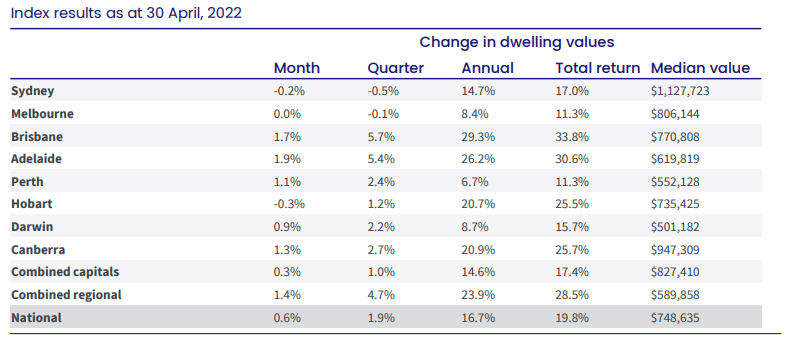
3. Combined regions continue delivering strong growth
Regional areas have continued the run of solid growth, returning (a combined regions measure) of 1.4% value growth over April while capital cities combined only raised by 0.3%. Over the last 12 months, the regions have returned a whopping 28.5% total return. The trio discuss the peak rate of growth, working from home, migration trends and the insights that can be gleaned. But is this a permanent attraction by home buyers towards the regions?
4. Rents and vacancy rates likely to entice investors back into the market
Nationally, vacancy rates have hit 1%, which represents a very tight rental market considering 2% is the norm. Even the poorest performing cities, Sydney and Melbourne, are below 2%, with all other capitals posting below 1%. This is good news for investors, because rental yields, (which have been at an all-time low for a while), are now expected to move back to historical norms.
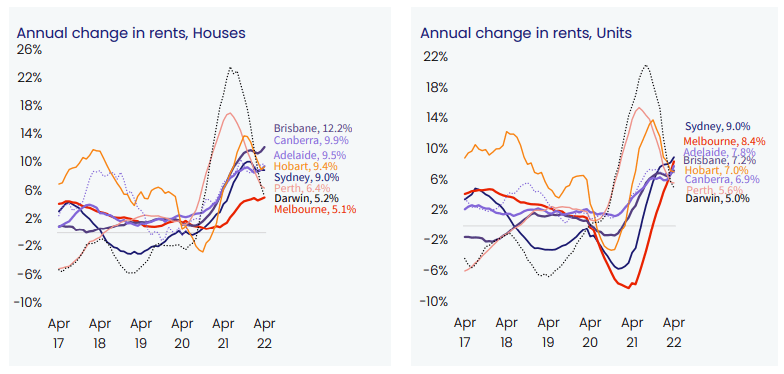
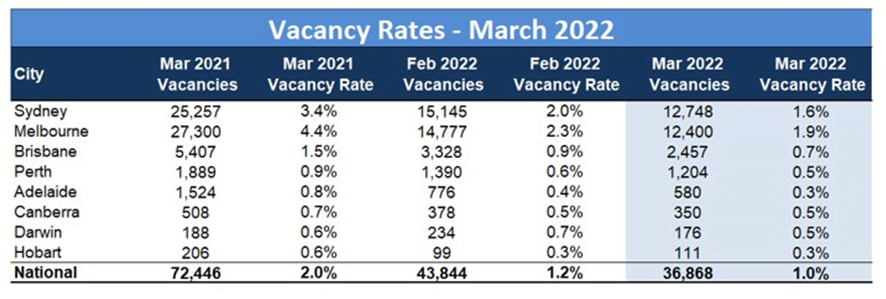
5. Melbourne and Sydney unit market recovering
A year ago, the Sydney and Melbourne unit market hit rock bottom. In a stellar recovery, unit rents are up by 8% for Melbourne and 9% for Sydney over the last year. This is likely to lead to value growth for units, as investors catch wind of rising rentals, tight vacancy rates and higher rental yields, and jump on the bandwagon.
6. Interest rates rise but the sky is not falling
A deterrent for budding investors is the strong likelihood of rising interest rates over the next year. However, market conditions are still incredibly positive. Property values are up, rents are up and interest rates are still historically very low, even if they do rise by 1%. Don’t forget, lenders factor in rising interest rates and changing market conditions and they add in a buffer to their affordability assessment accordingly.
7. Listings drop, is the election to blame?
Nationally, listings volumes have dropped over the last 3 months. People do get nervous with a pending election, even though there are no big ticket property items on the agenda this time around. The trio will be watching this space closely to see what happens with listings post the election and how this imbalance will affect property values.
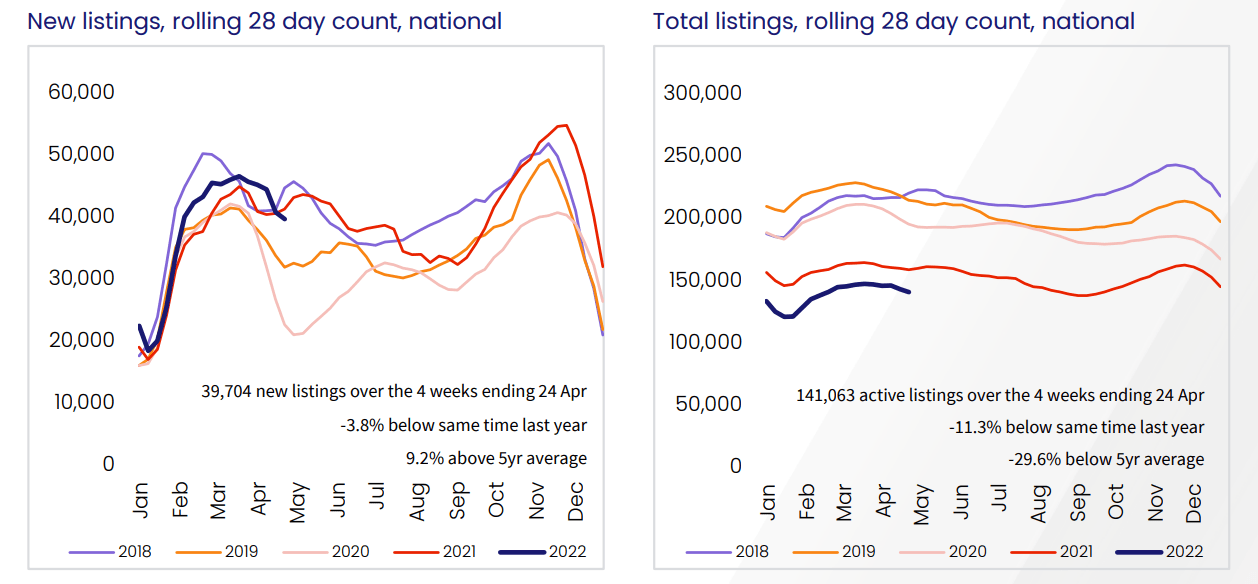
8. Key insights from lending indicators
The level of investors entering the market has started to plateau, while first home buyers are on a slight uptick. Comparing with historical figures, the level of investors and first-time buyers are in a balanced position. The trio discuss the private rental market and the key role it plays in housing those who are not able or not ready to purchase.
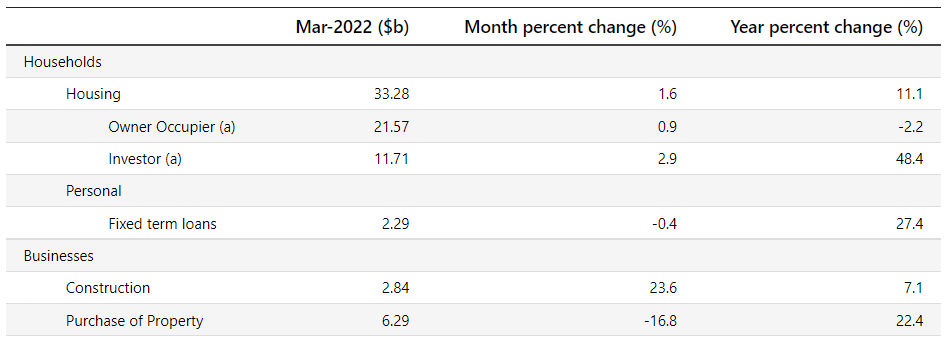
9. What does the 3 year bond yield say about where the cash rate is heading?
From 0.1% a year ago, the 3 year bond yield has flown to 3%. Regarding the cash rate, there is much debate about whether 1.5% or 2.5% will be the point of equilibrium in the economy. So, what do bond traders think about where rates are going and how challenging is this to pinpoint?
10. Unemployment at a significant long-term low
Although not receiving much attention in the election campaign, almost everyone who wants a job, has a job. The unemployment rate has been rounded at 4% and another reason why rates have increased. Rates go up when the economy is strong and people are spending, and the economy is strong because more people are in jobs than the nation has seen in a long time.
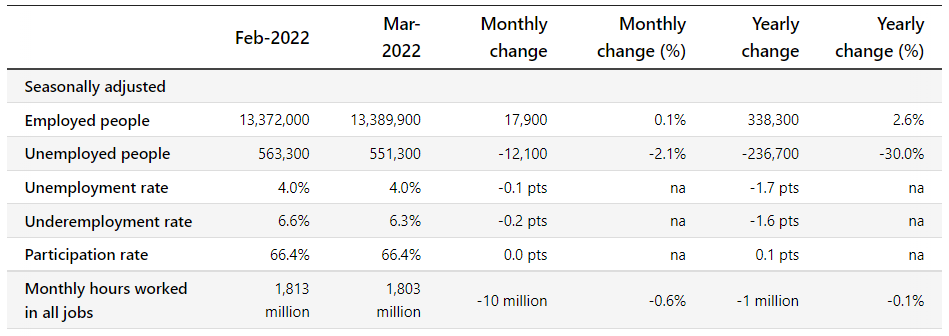
11. Inflation 101
Inflation is the talk of the town and the Property Planner gives our listeners a crash course in why prices are going up. Supply chain difficulties and the war in Ukraine are clear external factors that have caused soaring inflation. But to some extent, inflation has been exacerbated by our government and policy makers. The trio discuss how this has happened and the dangers of stagflation.





